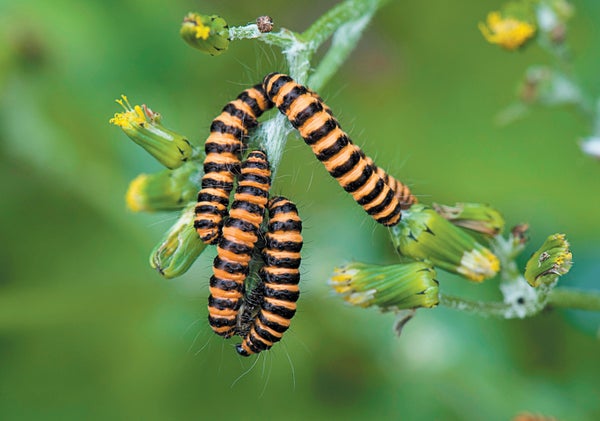September 16, 2024
2 min read
Caterpillars Sense Hungry Wasps’ Electrical Field
Predators’ electricity gives caterpillars an early warning

Nigel Cattlin/Alamy Stock Photo
Some animals have evolved an ability to detect the invisible electrical fields that fill the world around us. This seemingly alien power is well known in aquatic animals as electroreception, but it is far less frequently observed terrestrially. Now researchers have shown that caterpillars can sense the electrostatic fields of approaching wasps—the first such predator-prey interaction recorded on land.
The scientists uncovered this phenomenon by first measuring the electrostatic charges of the caterpillars and of their frequent predator, the common wasp. For a study in the Proceedings of the National Academy of Sciences USA, they used electrodes to replicate the electrical field produced by a wasp approaching a caterpillar. They then exposed three different caterpillar species to this “fake wasp.’’ (One, Tyria jacobaeae, is pictured here.)
All responded with defensive behavior. Two species remained protectively coiled for longer periods; the third bravely fought back by trying to bite the electrodes. The caterpillars reacted more strongly when the field oscillated at a wasp’s wingbeat frequency. The researchers determined the caterpillars detect these fields with bristly fibers covering their bodies, which vibrated from the electrical stimulus.
On supporting science journalism
If you’re enjoying this article, consider supporting our award-winning journalism by subscribing. By purchasing a subscription you are helping to ensure the future of impactful stories about the discoveries and ideas shaping our world today.
For terrestrial animals that share such a sense, “it’s going to be used in combination with other senses like hearing, like vision, basically to just provide an even more reliable sensory picture of whether a predator is there and where it is,” says study co-author Sam J. England, a sensory ecologist at the Natural History Museum, Berlin.
University of Bonn neuroethologist Gerhard von der Emde says the study “shows, very convincingly, a behavior response to electroreception in an arthropod.” Acknowledging that it would be difficult, he says he would like to see this behavior studied in nature without synthetic electrical fields.
Pauline N. Fleischmann, a neuroethologist at Carl von Ossietzky University of Oldenberg in Germany, says this study is a great example of “the impressive variety of cues that animals—in contrast to humans—can detect and actually use in their everyday tasks.” She adds that “the most fascinating follow-up question is how wasps might try to mask their charge and how the evolutionary arms race between prey and predators continues.”

